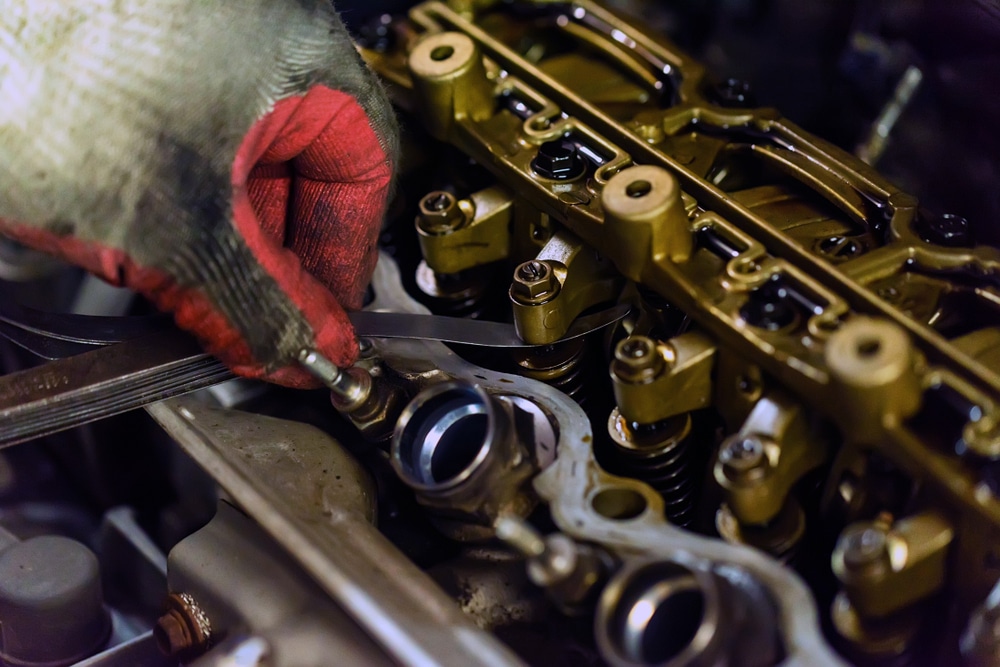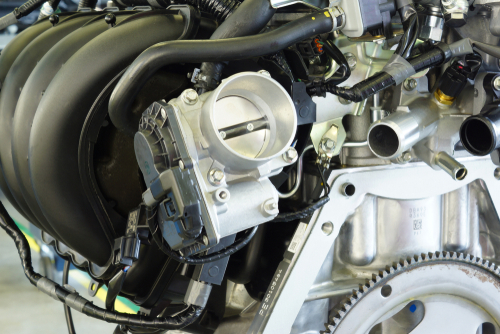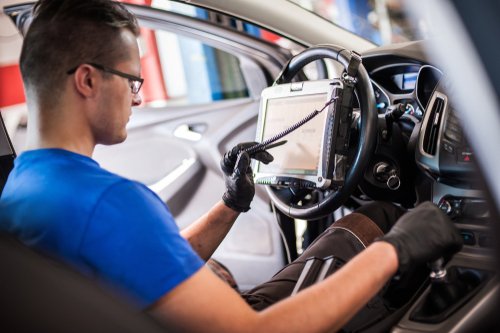Is your car’s check engine light giving you the dreaded P0028 code? Don’t panic just yet! This pesky error, known as “Intake Valve Control Solenoid Circuit Range/Performance (Bank 2),” might sound like a mouthful, but it’s not as scary as it seems.

The P0028 code indicates that your engine’s computer has detected an issue with the intake valve control solenoid on Bank 2 of your engine. This little gadget plays a big role in optimizing your engine’s performance by controlling the timing of the intake valves.
When it’s not working as it should, you might notice a dip in fuel economy or a rougher idle.
While the P0028 code can be a bit of a head-scratcher, it’s often fixable without breaking the bank. Whether it’s a faulty solenoid, a wiring issue, or just some dirty oil gumming up the works, diagnosing and addressing the problem can help get your ride back to its smooth-running self in no time.
Key Takeaways
- P0028 signals an intake valve control solenoid issue on Bank 2 of your engine
- Symptoms may include reduced fuel efficiency and rough idling
- Proper diagnosis and timely repair can prevent more serious engine problems
Understanding P0028 Error Code
The P0028 code can be a real head-scratcher for car owners. It’s all about your engine’s intake valve control, and it might be giving you some trouble. Let’s break it down so you can wrap your head around what’s going on under your hood.
Decoding the Trouble Code
P0028 is like your car’s way of saying, “Hey, something’s up with my intake valves!” Specifically, it’s pointing to the intake valve control solenoid circuit in Bank 2 of your engine. This little gizmo controls the airflow into your engine, which is pretty darn important for keeping things running smoothly.
When your car’s computer can’t get this solenoid to behave properly, it throws up the P0028 code. It’s like your engine’s trying to dance, but one of its feet is stuck. Not a great situation for your four-wheeled friend!
Symptoms to Watch Out For
Now, how do you know if you’ve got this pesky P0028 problem? Well, your car might start acting like it’s had one too many at the gas station. You might notice some rough idling, like your car’s shaking more than Elvis in his prime.
That annoying Check Engine Light might pop on, too. It’s like your car’s way of waving a red flag at you. You might also feel a dip in your engine’s performance. It’s as if your car’s suddenly decided it doesn’t want to be a race car when it grows up anymore.
Keep an ear out for strange engine noises, too. If your car starts sounding like a grumpy old man, it might be time to get it checked out. Don’t ignore these signs – your car will thank you for the attention!
Anatomizing the Intake Valve Control Solenoid

Let’s pop the hood and take a closer look at this nifty little gadget that’s causing you trouble. The intake valve control solenoid is like the conductor of your engine’s orchestra, making sure everything opens and closes in perfect harmony.
Role in Variable Valve Timing
You might think of the intake valve control solenoid as your engine’s personal DJ, mixing up the valve timing to keep the party going. This little powerhouse is crucial to your Variable Valve Timing (VVT) system, adjusting when your intake valves open and close.
It’s like having a bouncer at a club, controlling who gets in and when. By tweaking the valve timing, your engine can breathe easier at different speeds and loads. This means more oomph when you need it and less fuel guzzling when you don’t.
Remember to keep an eye on your engine oil level. Low oil can make this solenoid grumpy, and nobody wants a grumpy solenoid!
Contributions to Fuel Efficiency
Now, you might be wondering, “What’s this solenoid doing for my wallet?” Well, buckle up, because it’s saving you some serious cash at the pump. By optimizing valve timing, your intake valve control solenoid is like a strict budget manager for your engine.
It ensures your engine uses just the right amount of fuel for each situation. When you’re cruising down the highway, it adjusts to keep things efficient. Need a burst of speed? It’s got your back there too.
This clever little device helps your engine achieve optimal performance across various driving conditions. It’s like having a Swiss Army knife for your engine – versatile and always ready to help you save some green.
Common Causes of the P0028 Code

Let’s peek under the hood at what’s triggering that pesky P0028 code. You’ll find it’s usually down to a couple of culprits – some electrical shenanigans or mechanical mischief.
Electrical Gremlins
You know those little gremlins that love to mess with your car’s wiring? They’re often behind the P0028 code. A faulty intake valve control solenoid is a common troublemaker. It’s like that one friend who always flakes on plans – unreliable and causing problems.
Wiring issues can also be the bane of your existence. Frayed or corroded wires are like bad arteries, blocking the flow of electrical signals. And don’t get me started on connector issues! Those little plugs can be as temperamental as a cat in a bathtub.
• Faulty solenoid • Corroded wiring • Loose connectors • Short circuits
Mechanical Mishaps
Sometimes, the problem’s not in the wires but in the greasy bits. A low engine oil level can wreak havoc on your intake valve control system. It’s like trying to run a marathon without your morning coffee – things just don’t work right.
Worn-out components can also trigger the code. Your intake valve control solenoid might be working harder than a one-armed wallpaper hanger, leading to premature wear and tear.
• Low oil level • Worn solenoid • Stuck valves • Clogged oil passages
Navigating Repair and Replacement
Fixing that pesky P0028 code isn’t always a walk in the park. You’ll need to decide whether to roll up your sleeves or hand the keys to a pro. Either way, your wallet’s going to feel it, but don’t fret – we’ll help you navigate these choppy waters.
DIY Versus Professional Fixes
Feeling brave? Tackling the P0028 code yourself might save you some cash, but it’s not for the faint of heart. You’ll be diving into the engine’s guts, dealing with the intake valve control solenoid on Bank 2. It’s like performing surgery, but your patient is made of metal.
If you’re handy with a wrench, start by checking the oil level and quality. Dirty oil is often the culprit. An oil flush might just do the trick. If that doesn’t work, you’re looking at replacing the valve control solenoid.
For the less mechanically inclined, this job might be best left to the pros. They’ve got the tools and know-how to diagnose and fix the issue without turning your engine into a jigsaw puzzle.
Estimating the Cost to Mend
Brace yourself – fixing a P0028 code isn’t exactly cheap as chips. The cost can vary wildly depending on your ride and who’s doing the work.
DIY warriors might get away with spending $50-$200 on parts if it’s just an oil issue. But if you need to replace the solenoid, you’re looking at $100-$300 for parts alone.
Going pro? Labor rates can make your eyes water. Expect to shell out anywhere from $80 to $150 per hour. Total professional repair costs usually fall between $300 and $800, depending on your vehicle’s make and model.
Preventing Future P0028 Code Alerts
Keep your engine purring like a kitten and avoid those pesky P0028 alerts with a bit of TLC. A little prevention goes a long way in keeping your ride smooth and code-free.
Routine Checks and Balances
Start by giving your intake valve control solenoid some love. Check it regularly for any signs of wear or damage. Trust me, it’ll thank you later.
Don’t forget about your ECM. This little computer brain needs clean connections to stay happy. Give those electrical connectors a once-over and keep them corrosion-free.
Your timing chain is like the rhythm section of your engine band. Keep it in tune with regular oil changes. Fresh oil is music to your engine’s ears.
Lastly, listen for any engine misfires. They’re like your car’s way of clearing its throat. If you hear them, don’t ignore them!
Long-Term Vehicle Health Tips
Think of your oil system as your engine’s bloodline. Keep it clean and flowing smoothly.
Use the right grade of oil and change it on schedule. Your engine will thank you with years of faithful service.
Pay attention to your check engine light.
It’s not just a fancy decoration. If it lights up, don’t panic, but don’t ignore it either.
Get it checked out pronto.
Regular tune-ups are like spa days for your car. Schedule them and stick to them.
Your mechanic can spot potential issues before they turn into wallet-draining problems.
Lastly, drive smart. Avoid revving your engine like you’re in a Fast and Furious movie.
Your intake valves will appreciate the gentle treatment.
Frequently Asked Questions
Dealing with a P0028 code can be as perplexing as trying to find your car keys in a messy garage. Let’s tackle some common head-scratchers about this pesky problem.
What’s the usual suspect when dealing with a P0028 code in a Subaru?
In Subarus, the intake valve control solenoid is often the culprit.
It’s like that one unreliable friend who always shows up late to the party – eventually, it’s going to cause problems.
Can a DIY weekend warrior handle replacing an intake valve control solenoid, or should I leave it to the pros?
If you’re handy with a wrench and have a good repair manual, you might be able to tackle this job.
But remember, it’s like brain surgery for your car – one wrong move and you might be calling a tow truck.
Where can I find the intake valve solenoid on my 2011 Subaru Outback, and do I need a map to get there?
You’ll find it near the top of the engine, usually on the passenger side.
No map needed, but a flashlight and some patience wouldn’t hurt. It’s like a game of automotive hide-and-seek.
My car’s just thrown a P0028 code – is this the automotive equivalent of ‘check engine’ vague or something to address immediately?
While not as urgent as your engine catching fire, it’s not something to ignore.
This code can affect your engine’s performance and fuel economy.
Think of it as your car politely asking for help before it starts screaming.
If I ignore the P0028 code because my car seems to be running fine, will it turn into a bigger problem, or will it be like the stereo’s ‘eject’ button and rarely used?
Ignoring it is like ignoring a toothache – it might seem fine now, but it could lead to bigger, more expensive problems down the road.
Your wallet will thank you for addressing it sooner rather than later.
How does ‘Bank 2’ differ from ‘Bank 1,’ and does it mean my engine’s now running a financial institution?
‘Bank 2’ refers to the side of the engine opposite cylinder #1. It’s not making loans, but it is important for your engine’s balance.
Think of it as your engine’s way of keeping its cylinders organized, like a very particular librarian.
